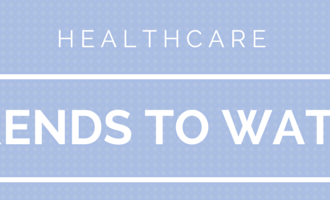What if we paid for patient recovery rather than just patient services?
What if we paid to treat patients rather than just conditions?
What if we paid to personalize care rather just population health quality measures?
What if we paid for patient recovery rather than just patient services?
What if we paid to treat patients rather than just conditions?
What if we paid to personalize care rather just population health quality measures?
While these questions may sound academic, there is a groundswell of innovative healthcare providers working on the answers. To realign the healthcare system to overall patient recovery and well-being, it will take physicians and other healthcare providers transforming the entire system. The good news is that this is quietly happening from within, with physicians, healthcare systems and health plans working together.
They include the over 500 Accountable Care Organizations, 6,500 providers considering bundled payment pilots and providers signing risk sharing agreements with health plans. Physicians, healthcare systems and insurance plans are sharing data, sharing financial risk and focusing on improving overall patient outcomes and cost.
With little debate or fanfare outside the healthcare industry, Medicare quietly saved $372 million with their versions of the ACO. While some critics predict that ACOs will follow Health Maintenance Organizations (HMOs) demise in the 1990s, ACOs are different. Patients are assigned to ACOs and remain free to go to any provider. ACOs can’t limit care or require patients to see providers in their network. The ACO’s were still able deliver great results even with these two major challenges which they call “churn” (ACO assigned patient turnover) and “leakage” (patients going outside the provider network).
Bundled Payments are just getting started with up to 6,500 providers deciding soon whether to go live Jan 1, 2015 with Medicare’s Bundled Payment for Care Improvement (BPCI) pilot. Provider/Health Plan risk sharing arrangements are expanding rapidly, indicating they are delivering. This surge began when the Affordable Care Act (ACA) started requiring health plans to write rebate checks if they paid out less than 85% of their premiums in medical claims. This encouraged Health Plans to partner and reward providers for improvements in patient outcomes and cost. Health Plans leaders believe that the “blurring of the lines” between providers and health plans is just getting started.
Patient Recovery vs. Patient Services
The focus is evolving from addressing patient’s medical needs with medical services to understanding what will drive patient outcomes. What are the barriers that are preventing or delaying recovery? Which medical interventions and non-medical interventions (E Interventions that receive no reimbursement) will drive patient recovery?
A recent study by the Institute of Medicine recommended financial incentives to pay for “medical and social services that decrease the need for emergency room and acute care services”. These services could improve patient recovery by ensuring a heart failure patient has a ride to their cardiologist appointment, has a caregiver at home, can afford their medicine and are getting a good meal at least once a day. We will need to track these patient’s conditions, barriers and E-interventions to understand their effectiveness on delivering patient recovery.
Patient-Well Being vs. Treating Conditions
Does every patient need aggressive treatment or surgery just because the condition is possibly curative? What about the patient’s quality of life? How would the treatment impact each of the 5 areas Healthways and Gallup describe as well-being. Purpose (being there for a grandchild), Social (being with those you love), Financial (ensure this won’t result in bankruptcy), Community (liking where you live and feeling safe) as well as Physical (having good health and energy).
We associate Palliative Care with end of life Hospice treatment more than the cold medicine we take for palliative relief of symptoms. Hospice is for people in their final 6 months of life, which likely includes palliative care to relieve pain and other troubling symptoms. Yet some patients receive palliative care for decades by foregoing curative medical interventions while prioritizing well-being in addressing their emotional, spiritual, and practical needs. The same IOM report recommended a national campaign to educate physicians, healthcare professional and people on the subject of palliative care to address well-being rather than just conditions.
Personalized Care vs. Population Health
Some early entrants into population health have focused entirely on the population quality measures that are important for many, yet could come at the expense of the personalized needs of the few. Addressing quality measures (HEDIS, ACO) for hypertension (Blood Pressure > 140/90) for diabetes (HbA1c >9%) to prevent hyperglycemia and other diabetes complications helps the many. Yet it could overshadow the few with unique or rare conditions and possibly increase incidences of hypotension (low blood pressure) and hypoglycemia (low blood glucose).
We have learned so much in the past couple of years about the microbiome and how it regulates much of what it happens in our bodies. It will soon be standard practice to sequence the DNA of our estimated 500 to 1,000 bacteria species that live within us. This will help us understand our uniqueness and tailor personalized treatments. It may be awhile before we have population health quality measure for each of these bacteria species.
Before we can begin to pay for patient recovery and well-being, there are many questions to answer. How do we measure patient recovery? How do we measure patient well-being? How do we measure personalized performance of medical treatments based on the estimated 100 trillion bacteria cells living in us and on us?
The innovative healthcare providers that have begun this transformation need these answers to continue iterating. The answers not only provide insight into the healthcare system we want, they will provide insight into the only healthcare system we can afford.
patient recovery / shutterstock







